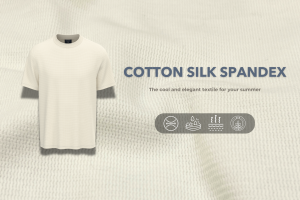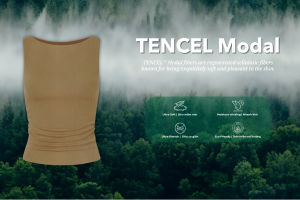What does the fashion industry say about the trend of sustainability?
In recent years, sustainable fashion has been increasingly recognized as a crucial factor in the modern fashion industry. It is not just a passing trend but also reflects the commitment to the environment by professional fashion businesses, showcasing the values of these businesses to society and consumers. So, what does the fashion industry say about the trend of sustainability? Let’s find out with Tbond!

1. Sustainable fashion - the trend towards "green" fashion approach
Sustainable fashion is an approach within the fashion industry aimed at optimizing positive impacts on the environment and society. This includes using materials and production processes with minimal negative environmental impact and ensuring products maintain a sustainable lifecycle.

Sustainable fashion typically focuses on three main aspects:
- Environment: Using organic materials, recycling, and reusing to reduce waste and natural resource consumption. Additionally, minimizing emissions, water, and chemicals in the production process.
- Quality products: Creating high-value products with stable lifecycles to limit fashion waste entering the environment.
- Society: Ensuring fair and safe working conditions for workers in the fashion industry, as well as respecting and protecting their rights.
2. How is sustainable fashion popular worldwide?
The trend of sustainable fashion is gradually gaining popularity and is widely embraced by the younger generation, particularly Gen Z and Gen Y, as a commitment to increasing responsibility in environmental protection.

One of the notable trends in this market is circular fashion, achieved through recycling or reusing old clothes to “upgrade” them into stylish and appealing outfits. Eco-friendly materials such as organic cotton, natural linen fibers, or even recycled polyester fibers are widely applied to meet the increasing demand from the market.
According to the Global Sustainable Fashion Market Report, the Compound Annual Growth Rate (CAGR) of the sustainable fashion industry is projected to reach 22.9% from 2023 to 2030. The men’s fashion segment for this market has also expanded as brands continuously adopt the use of “green” products sourced from natural fibers instead of synthetic ones.
3. Benefits of sustainable fashion
In contrast to fast fashion, which has caused many negative impacts on the environment and communities, sustainable fashion brings various benefits to society from different aspects, including:
Firstly, sustainable fashion minimizes negative environmental impacts by using recycled materials, organic materials, and resource-saving production processes. This helps reduce waste and environmental pollution, protects biodiversity, and mitigates the impact on climate change.

Secondly, sustainable fashion promotes fair and safe labor standards throughout the supply chain, protecting the rights of workers. This contributes to creating a positive work environment and enhancing economic and social development within the community.
Thirdly, sustainable fashion contributes to raising awareness and educating the community about environmental and social issues. It encourages consumers to understand the origin of products and their impact on the environment and society.
4. Sustainable materials used by Tbond in the Summer 2024 collections
This summer, Tbond has developed several new sustainable materials for functional fabric items:
4.1. Cotton Linen Knit
A blend of Cotton – a material grown without the use of harmful chemicals such as chemical fertilizers and pesticides – and Linen, a fabric made from flax, a plant that is easy to grow and does not require much water and chemicals.

The fabric is applied with a knit fiber structure to enhance durability, softness, and flexibility, making it an excellent choice for summer collections, easy and convenient for continuous activities under intense sunlight.
4.2. TENCEL Modal
This is a cellulose fiber produced from plant sources such as sustainable wood. Its production process consumes less water compared to other synthetic materials and has high recyclability.

The Ultra-soft fabric technology creates a smooth feel for the skin, effective moisture absorption due to its special weaving structure, and superior elasticity, making the material durable and adaptable for all four seasons.
4.3. Moisturizing Fabric
Cotton Spandex material with 92% cotton and 8% spandex provides superior moisturizing ability and is suitable for sensitive skin.

The durable fabric and lightweight 230gsm fabric weight ensure comfortable movement throughout the summer days.
Sustainable fashion has become a trend, permeating every corner of fashion brands and major fashion houses worldwide. With the valuable information shared by Tbond, hopefully, you will have a better understanding of what sustainable fashion is. If you are a fashion enthusiast, don’t forget to stay updated with the latest news from our fashion blog section!
>>> Xem thêm:
Sorry, we couldn't find any posts. Please try a different search.
Table of contents
-
















